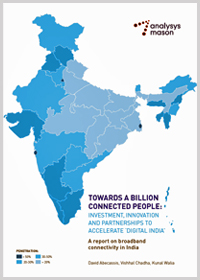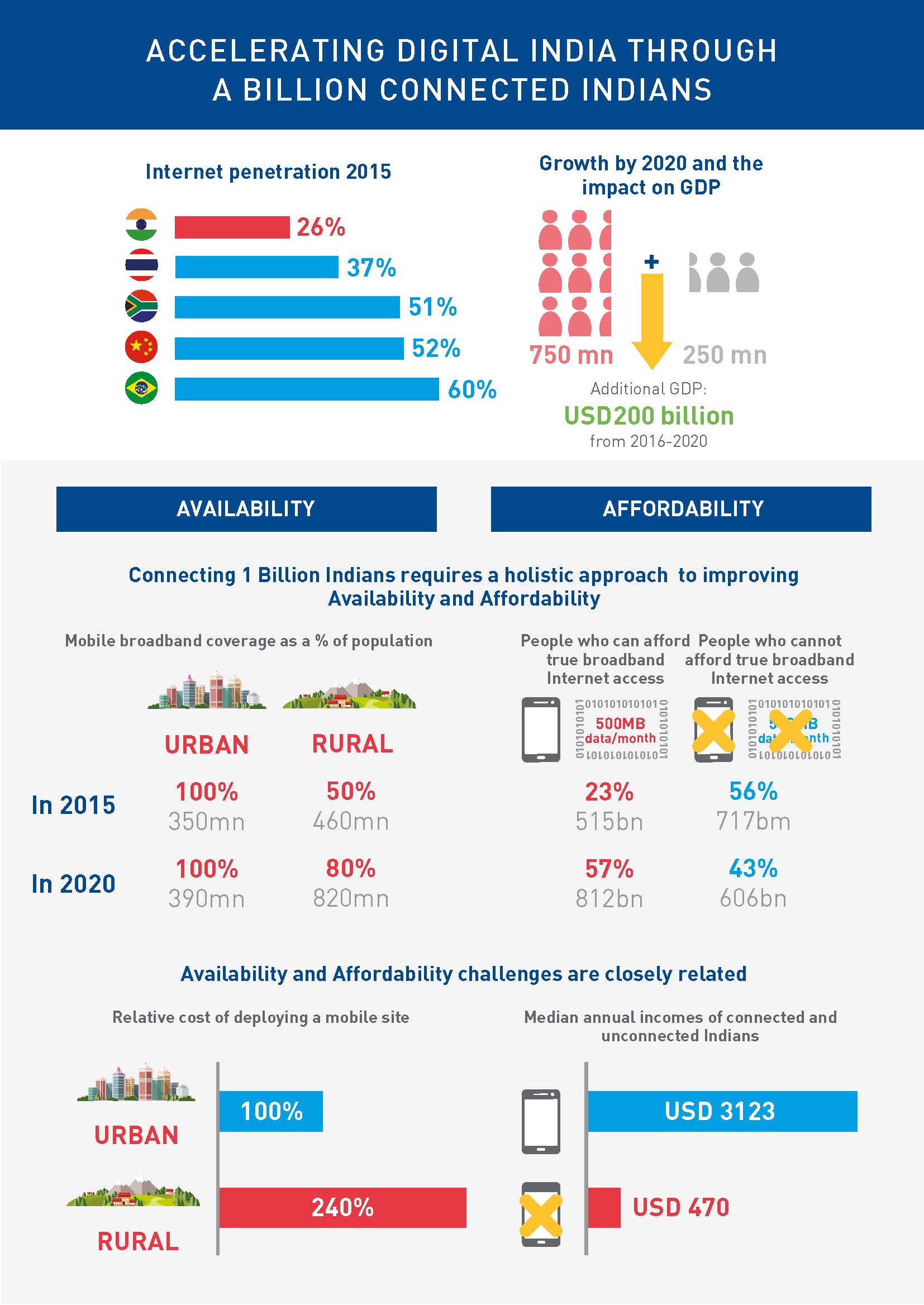Towards a billion connected people: investment, innovation and partnerships to accelerate ‘Digital India’
 A new report by Analysys Mason, sponsored by Google, examines the role of economics, policy and partnerships in alleviating the barriers to Internet access in India.
A new report by Analysys Mason, sponsored by Google, examines the role of economics, policy and partnerships in alleviating the barriers to Internet access in India.
David Abecassis (Partner) will present the findings of the report at an event in New Delhi on 19 December 2016.
Bringing one billion Indians online by 2020 could add USD200 billion (INR10 lakh crore) to India’s GDP over the next five years, but achieving this challenging target will require more than just investment and innovation from many different stakeholders throughout the Internet value chain.
For all stakeholders to work towards a common goal of expanding access across the country, public policies need to prioritise making broadband networks open and widely available, and maintaining an international outlook.
Doing so will facilitate affordable data and devices, which are essential to broadband adoption and usage.
Public-policy approaches that support these goals include the following:
- Implementing an appropriate spectrum policy and management framework that focuses on increasing connectivity rather than raising revenue, and enables experimentation and innovation by making new spectrum bands available broadly. This is crucial as wireless technologies will remain the main technical solution to enable access networks to reach the more than 500 million Indians currently not covered by broadband at a sufficiently low cost.
- Ensuring data and device prices are affordable to many more people – this includes bringing down the cost of network deployment and having device policies that follow international standards, rather than new India-specific standards. The importance of affordability cannot be overstated – even accounting for expected economic growth, in 2020 over 62% of Indians will remain unable to afford a true broadband Internet experience.
- Maximising the impact of public investment to support universal, affordable broadband – very ambitious projects are underway, primarily through the BharatNet programme, and their success depends on ensuring they provide the inputs the industry needs, at the right price point, to truly expand broadband supply in India.
All these approaches imply taking a long-term policy view and emphasising the achievement of access and affordability outcomes rather than raising short-term revenues.
A longer-term view is beneficial for government too, as increasing broadband take-up could bring in more revenue to the government in five years than the recent spectrum auctions.
To view the full report, click on the link on the download box on the right.
Figure: Connecting 1 billion Indians requires a holistic approach to improving availability and affordability. [Source: Analysys Mason 2016]

Downloads
Report
Download Report
This white paper examines the role of economics, policy and partnerships in alleviating the barriers to Internet access in India.
Download
Denotes mandatory fieldsAuthors

